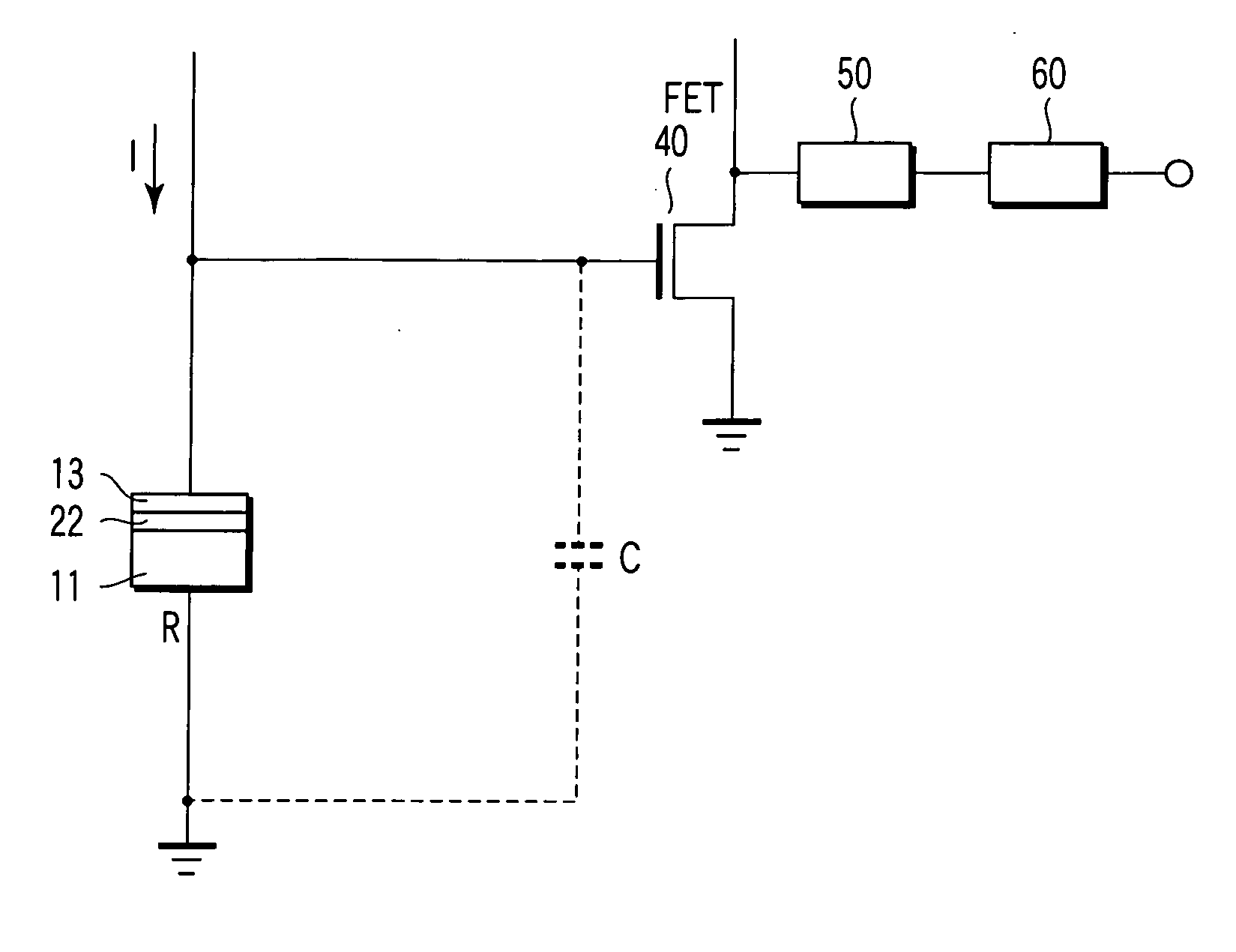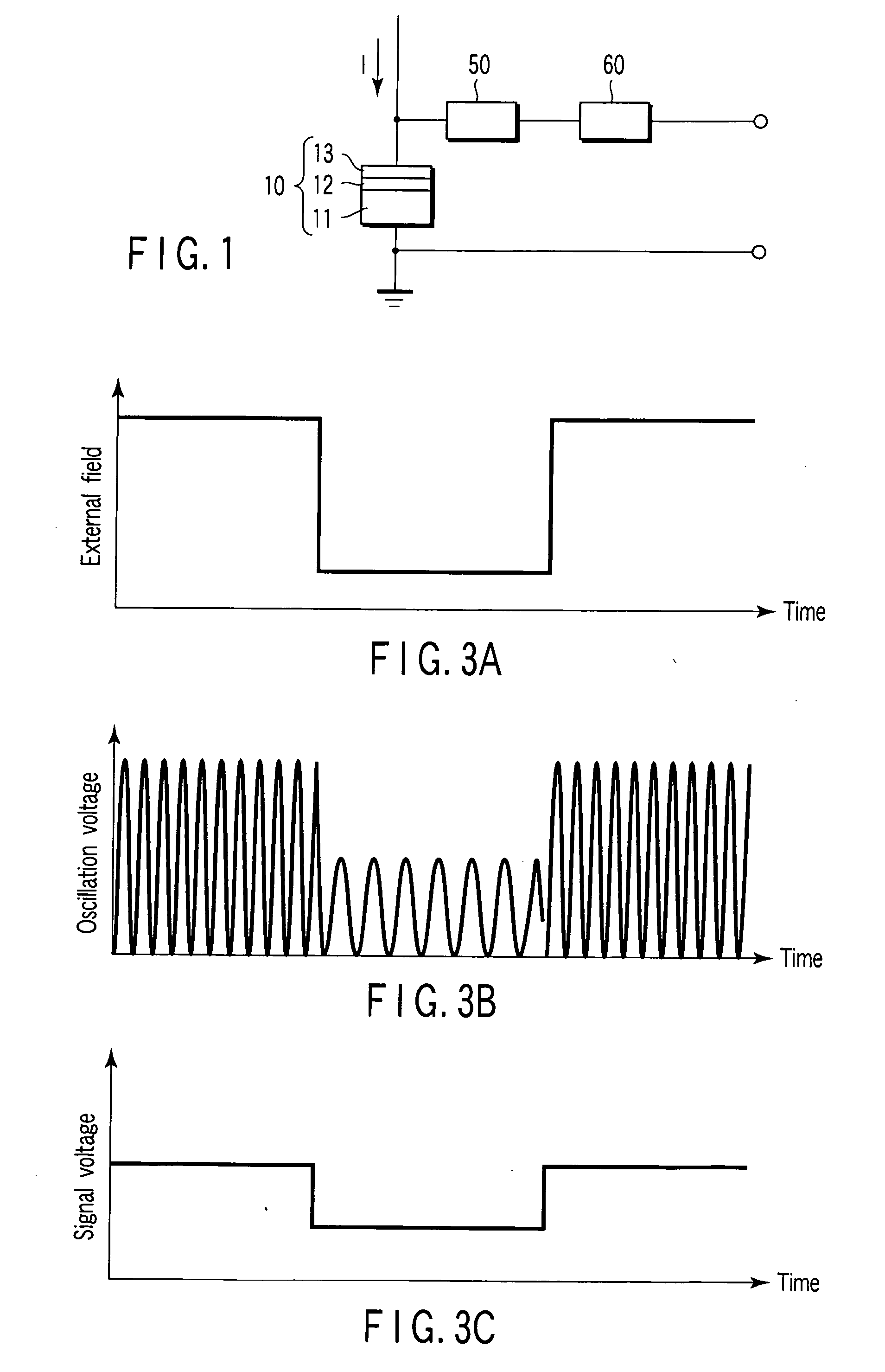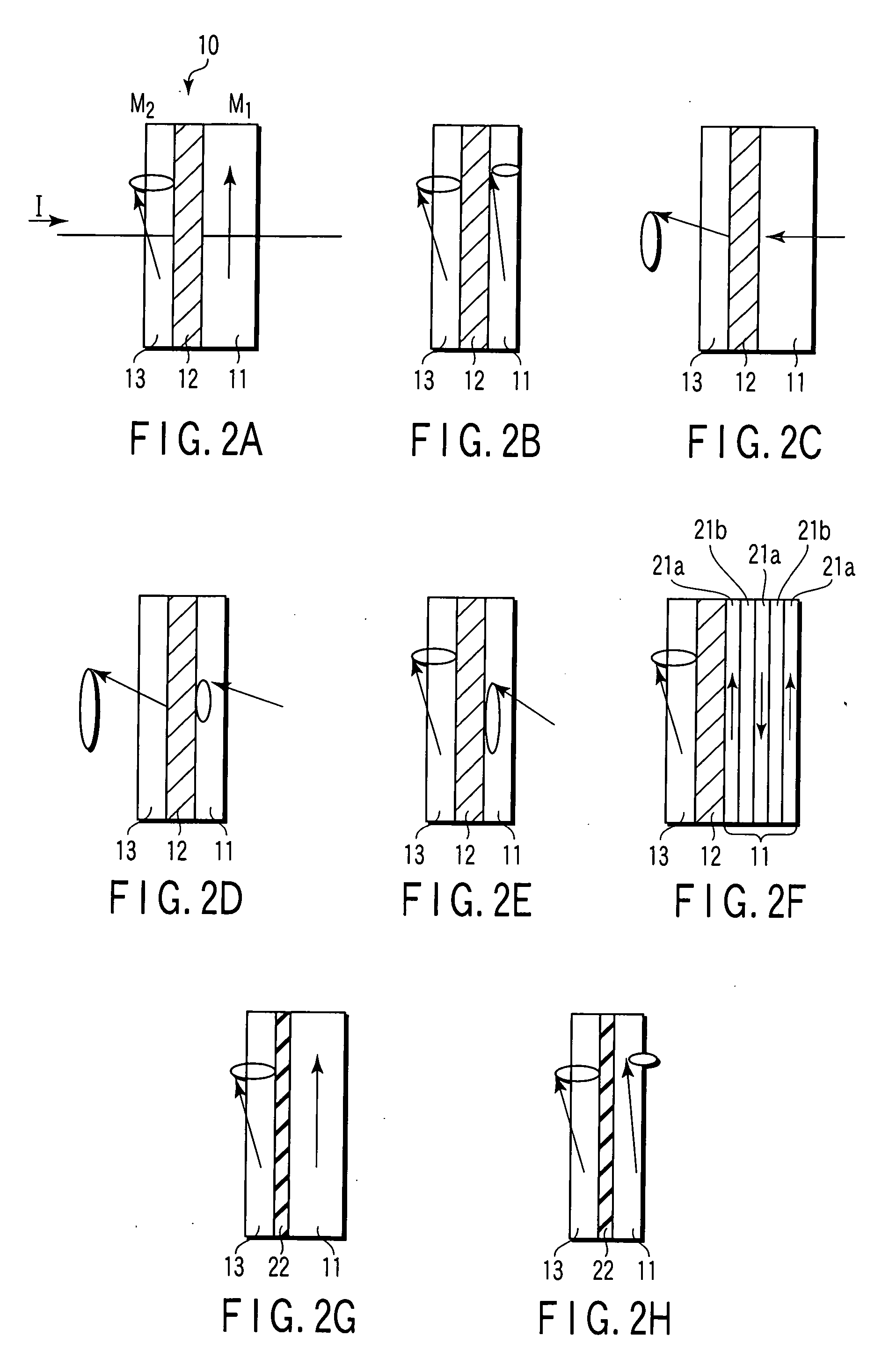Magnetic sensor
a magnetic sensor and sensor technology, applied in the field of magnetic sensors and magnetic recording and reproducing apparatus, can solve the problems of lowering the mr ratio, high noise component, and disadvantageous failure of tmr elements to achieve high signal-to-noise ratio (snr)
- Summary
- Abstract
- Description
- Claims
- Application Information
AI Technical Summary
Benefits of technology
Problems solved by technology
Method used
Image
Examples
example 1
[0046] In the present example, a magnetic oscillation element is produced and oscillation characteristics thereof are measured. The example will be described below. FIG. 8A is a plan view of a coplanar guide including the magnetic oscillation element produced in the present example. FIG. 8B is a sectional view of FIG. 8A. FIG. 8C is a detailed sectional view of a magnetic oscillation element in FIG. 8B. The coplanar guide is produced by depositing a metal thin film on a sapphire substrate (not shown) by sputtering and processing the metal thin film by electron beam lithography.
[0047] As shown in FIGS. 8A and 8B, two ground plates 101, 101 spaced at a distance of 100 μm are connected at their ends by a Ru layer 102 with a width of 5 ρm and a thickness of 100 nm. The magnetic oscillation element 10, an Au layer 103 with a thickness of 100 nm, and a waveguide 104 are formed on the Ru layer 102. As shown in FIG. 8C, the magnetic oscillation element is formed of a stack of the Ru layer ...
example 2
[0051] In the present example, measurement of a signal voltage will be described. An integrating circuit with a time constant of about 10 ns is connected to the magnetic oscillation element in place of the amplifier and spectrum analyzer in FIG. 9. A synchroscope is used to measure the output voltage (signal voltage) of the magnetic oscillation element with the pulse field shown in FIG. 11A applied to the element. FIG. 11B shows measurements of the signal voltage. As shown in FIG. 11B, a signal with an amplitude of 0.5 mV is obtained.
example 3
[0052] In the present example, measurement of a signal voltage obtained with a system in which a band-pass filter is added will be described. A Gaussian band-pass filter is interposed between the bias tee and the integrating circuit in the measurement system used in Example 2. The band-pass filter has a maximum transmittance of 98%, a center frequency of 11.9 GHz, and a full-width at half maximum of 0.5 GHz. As in the case of Example 2, a synchroscope is used to measure the output voltage (signal voltage) of the magnetic oscillation element with the pulse field shown in FIG. 12A applied to the element. FIG. 12B shows measurement of the signal voltage. As shown in FIG. 12B, the amplitude increases to about 1 mV.
[0053]FIG. 13 shows a perspective view of a magnetic recording and reproducing apparatus 150 according to an embodiment of the present invention. A magnetic disk (magnetic recording medium) 151 is mounted on a spindle 152 and rotated in the direction of arrow A by a spindle m...
PUM
 Login to View More
Login to View More Abstract
Description
Claims
Application Information
 Login to View More
Login to View More - R&D
- Intellectual Property
- Life Sciences
- Materials
- Tech Scout
- Unparalleled Data Quality
- Higher Quality Content
- 60% Fewer Hallucinations
Browse by: Latest US Patents, China's latest patents, Technical Efficacy Thesaurus, Application Domain, Technology Topic, Popular Technical Reports.
© 2025 PatSnap. All rights reserved.Legal|Privacy policy|Modern Slavery Act Transparency Statement|Sitemap|About US| Contact US: help@patsnap.com



